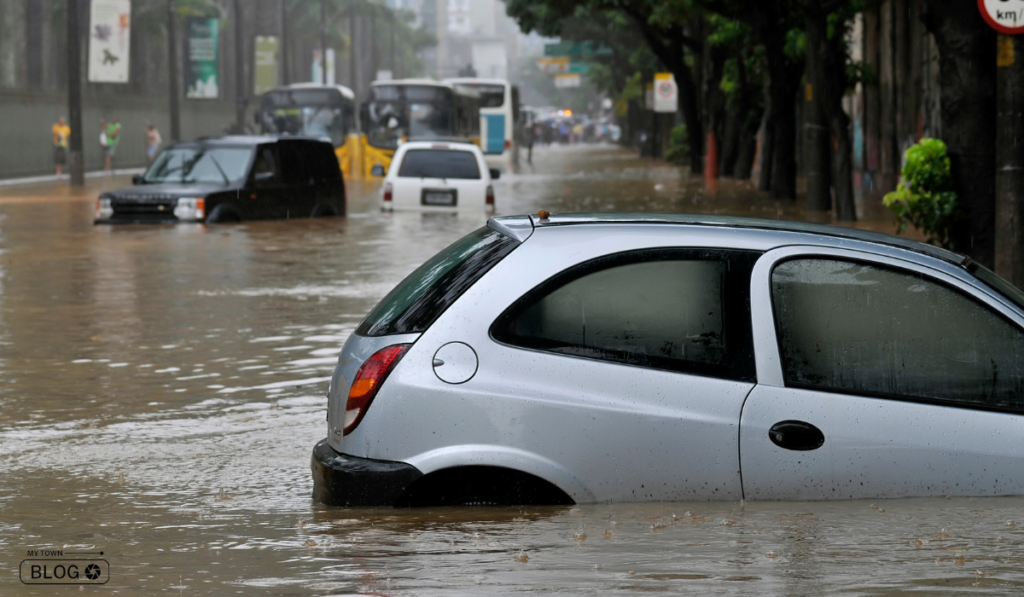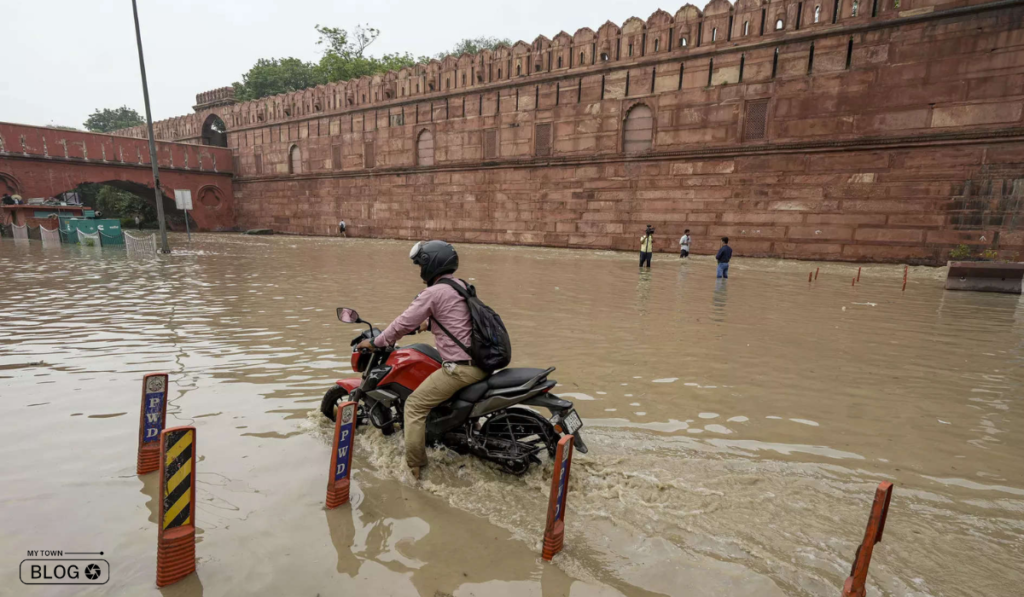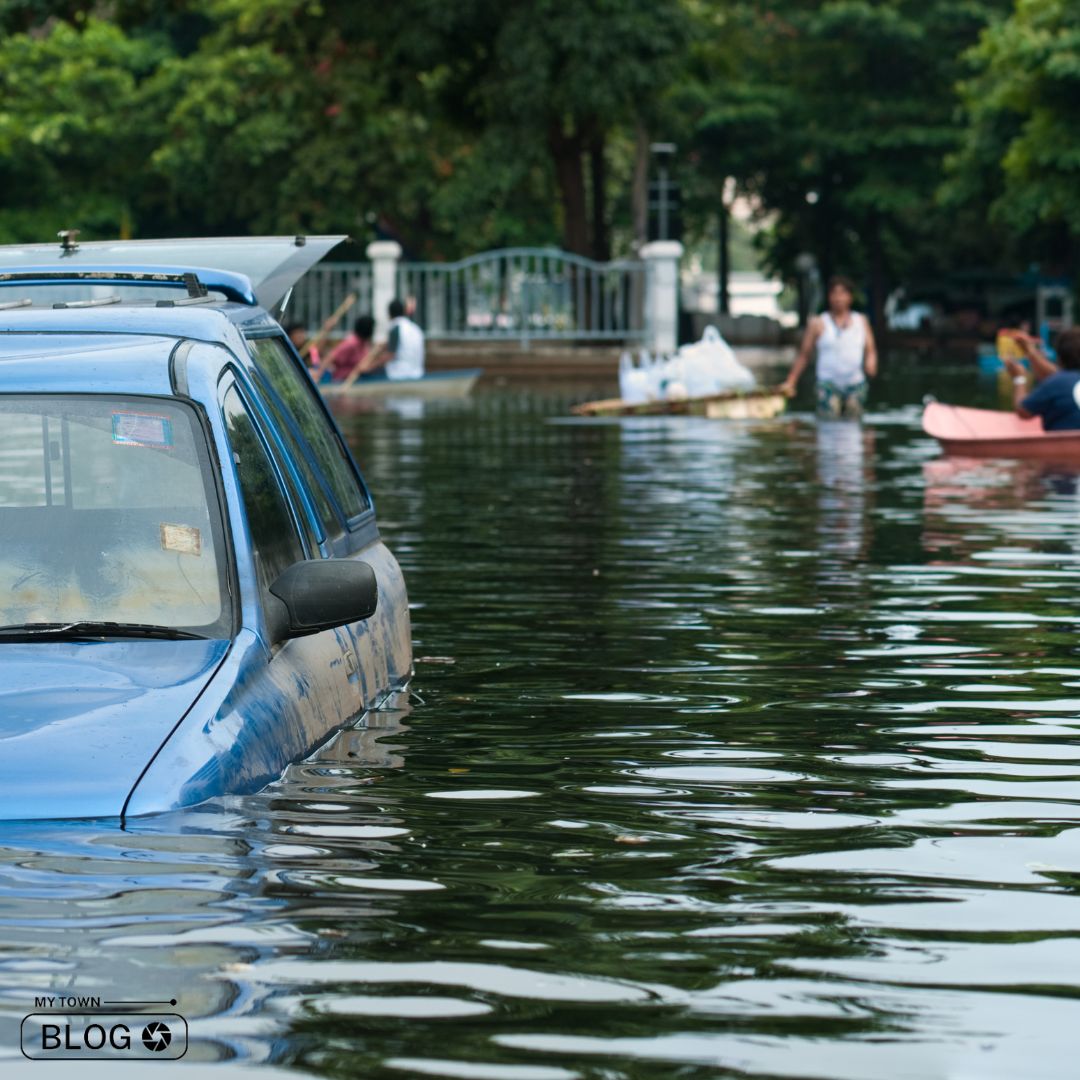
Authorities in the capital region of India, New Delhi, have conducted the evacuation of thousands of people and issued a directive for all schools and colleges to remain closed until Sunday. A major river flowing through Delhi overflowed its banks on Wednesday night, flooding homes and major roads. Authorities strongly advised individuals to stay indoors and work from home if feasible to mitigate further risks. Approximately 30 million people inhabit the city, and it faces the imminent threat of flooding inundating additional areas.
Certain sections of the Delhi subway system, which caters to a daily ridership of 2.5 million people, were forced to close due to the flooding. This development further exacerbated the situation as the waterlogged roads became congested with heavy traffic, leading to extensive traffic jams. Additionally, numerous vital roads in the city were completely submerged under water due to the flooding. Local TV channels broadcast footage of several low-lying areas entirely submerged by the waters of the Yamuna River. The visuals depicted individuals wading through flooded streets, striving to reach higher ground in the face of the inundation.
The Chief Minister of Delhi, Arvind Kejriwal, who authorized the implementation of emergency measures. Expressed concerns over the rapid rise in water levels on Thursday. He urged people to stay home to the greatest extent possible due to the escalating situation. The government administration under his leadership reported making arrangements for over 2,000 shelters to accommodate those displaced by the flooding. By Thursday afternoon, approximately 16,000 residents had already been evacuated from low-lying areas of the city.
On Thursday afternoon, the water level in the Yamuna River reached a 45-year peak of 684 feet, surpassing the previous record of 681 feet set in 1978. The sudden surge in Yamuna’s water level occurred after authorities released additional water from a dam in the neighboring state of Haryana to alleviate pressure. These actions led to record-breaking water levels in Delhi, despite the city not experiencing heavy rainfall in the past few days.
There is growing concern that the expansive Indian capital could face a drinking water shortage in the upcoming days. Due to the flooding of three water treatment plants within the city. These three facilities supply approximately a quarter of Delhi’s population with fresh water.
Although there has been a recent reduction in rainfall, this year’s monsoon in Delhi has shattered records. Last Saturday alone, the city endured an astonishing six inches of rain, marking the highest single-day downpour in the past four decades. Scientists attribute the increased frequency, intensity, and unpredictability of such extreme weather events as floods, cyclones, and heat waves in India to global warming and climate change.
People face problems due to the water-logging

Numerous areas in Delhi are grappling with floods and water-logging due to the continuous rise in the water level of the Yamuna River caused by heavy rainfall. Presently, the water level has receded to 208.46 meters. The Central Water Commission has forecasted a further decrease to 208.30 meters by 1 pm today. However, waterlogging persists in certain parts of the national capital despite this decline.
Conclusion
The flooding of the Yamuna River in Delhi has presented significant challenges for the city and its residents. The primary causes behind the floods include heavy rainfall, water release from upstream dams, inadequate drainage infrastructure, encroachments, and urbanization. The government has provided relief and assistance to those affected, including setting up shelters, distributing essential supplies, and coordinating rescue efforts.
FAQs
What are the major causes behind the flooding of the Yamuna River in Delhi?
The primary causes behind the flooding of the Yamuna River in Delhi include:
- Heavy rainfall in the catchment areas
- The release of excess water from dams in neighboring states
- Inadequate drainage infrastructure
- Encroachments along the riverbanks
- Urbanization leads to reduced natural water absorption
Is the government providing relief and assistance to those affected by the Yamuna floods in Delhi?
Yes, the government is actively providing relief and assistance to those affected by the Yamuna floods in Delhi. This includes setting up shelters and relief camps, distributing food, water, and essential supplies, deploying rescue teams, and coordinating with various agencies to ensure the safety & well-being of the affected population.
How long is the flood situation expected to persist in Delhi?
The duration of the flood situation in Delhi can vary depending on factors such as rainfall patterns, water release from upstream dams, and the effectiveness of flood management measures. It is difficult to provide an exact timeline, but flood typically subsides as water levels recede, and drainage systems can effectively cope with the excess water. Regular updates from authorities can provide a better understanding of the expected duration.
What precautions and safety measures should individuals take during the Yamuna floods in Delhi?
- Avoid walking or driving through flooded areas to prevent accidents and waterborne diseases.
- If evacuation orders are issued, follow them promptly and move to designated safe locations.
- Protect personal belongings and important documents in waterproof bags or containers.
- Avoid using electrical appliances or switches in saturated areas to avoid the risk of electrocution.
- Be cautious of contaminated water and ensure access to clean drinking water and sanitation facilities.
- Stay connected with family, friends, and emergency services for needed assistance.
These precautions are general guidelines, and it’s essential to adhere to any specific instructions or advisories provided by local authorities during the flood situation in Delhi.








